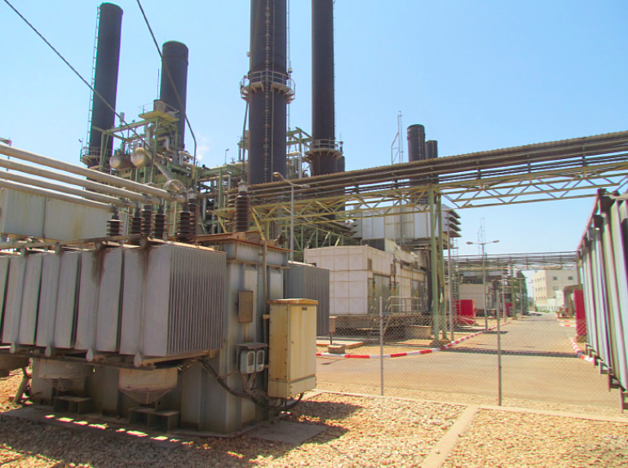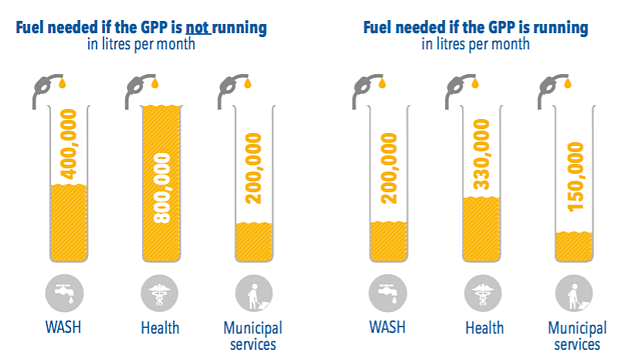Electricity shortages continue impeding the delivery of basic services
At this month’s meeting of the Ad-Hoc Liaison Committee (AHLC), a high-level, biannual donor meeting, the Israeli authorities announced their intention to establish a new electricity line into the Gaza Strip. The line could supply an extra 100 megawatts (MW) of electricity, almost doubling the current supply from Israel. The announcement did not include an implementation time frame. In the meantime, the provision of basic services across the Gaza Strip remains severely hampered by the longstanding electricity deficit.[1]
The situation has worsened since October 2013 when the Gaza Power Plant (GPP) cut operations to half of its capacity (60 MW of 120 MW) due to funding challenges which limited the purchase of sufficient fuel.[2] On multiple occasions - an average of one day per month during the first half of 2016 - the GPP has been forced to shut down totally. Electricity supplies from Israel (120 MW) and Egypt (20-28 MW) have also been disrupted repeatedly since the start of the year due to technical malfunctioning and constraints in the ability of Egyptian and Israeli teams to carry out repairs.

This has required the Gaza Electricity Distribution Company (GEDCO) to implement a rationing system of rolling power cuts of 12 to 16 hours per day. However, rolling power cuts can reach up to 18-20 hours per day, if supply from one of the three sources is disrupted. Service providers rely heavily on back-up generators, but these are also unable to operate efficiently due to funding shortages, overuse and a lack of spare parts for repairs; the parts are classified as “dual-use” items by the Israeli authorities.
Health
Although five of the 13 hospitals in Gaza have been provided by GEDCO with an additional connection to the grid, doubling the regular supply, all of them are still heavily dependent on back-up generators. Apart from the inherent fragility of such dependency, many hospitals are also vulnerable to disruptions in generator function due to limited fuel-storage capacity.[3]
Common coping mechanisms adopted by hospitals in Gaza include the postponement of non-urgent and elective surgeries; increasing referrals of patients outside of Gaza, particularly for chronic illnesses; discharging patients prematurely; and reduction and/or cancellation of complementary services such as cleaning and catering. According to the World Health Organization (WHO), a log has been recorded over the past three years of 300 machines and medical equipment at hospitals damaged due to fluctuations in the electricity supply.
Water and sanitation
In most areas, the shortage of electricity and fuel has reduced the water supply to households and increased reliance on water trucking from private, uncontrolled suppliers. This has resulted in a lowering of standards of hygiene. Wastewater treatment plants also have shortened treatment cycles, thus heightening the level of partially treated sewage routinely discharged into the sea. There is a constant risk of a back-flow of sewage onto streets. Fuel shortages for vehicles have also forced municipalities to significantly reduce refuse collection, generating additional public health hazards. Over 500 donkey carts including 230 in Gaza city are currently are employed to support the house-to-house collection of solid waste.
Emergency fuel deliveries

To ensure a minimum functionality of key service providers, humanitarian partners have been delivering emergency fuel supplies since 2013. Current beneficiaries include 40 health facilities, 108 water and wastewater installations, and 29 solid waste management facilities. UNOCHA has been in charge of the prioritization and coordination, while UNRWA has worked with UNICEF and WHO for the distribution. Current deliveries to the three sectors stand at 680,000 litres per month to meet the minimum requirements to operate the GPP at half capacity. So far in 2016, this mechanism has been funded by the Islamic Development Bank, Turkey, Japan and Human Appeal International for a total of $ 6.03 million, which is projected to last until June 2017. Between January and August 2016, around 5.10 million litres of fuel have been delivered including 2.87 million litres for health, 1.21 for WASH and 1.10 for solid waste.
[1] See: OCHAOPT, The Humanitarian Impact of Gaza’s Electricity and Fuel Crisis, 28 March 2014.
[2] The GPP needs approximately NIS45 million per month to procure sufficient fuel to operate at half capacity (60MW approximately). Currently, it can only secure around NIS20-23 million per month through customer payments.
[3] For example, Shifa Hospital, the main hospital in the Gaza Strip, has the capacity to store 135,000 litres of fuel and consumes around 1,000 litres per hour.









